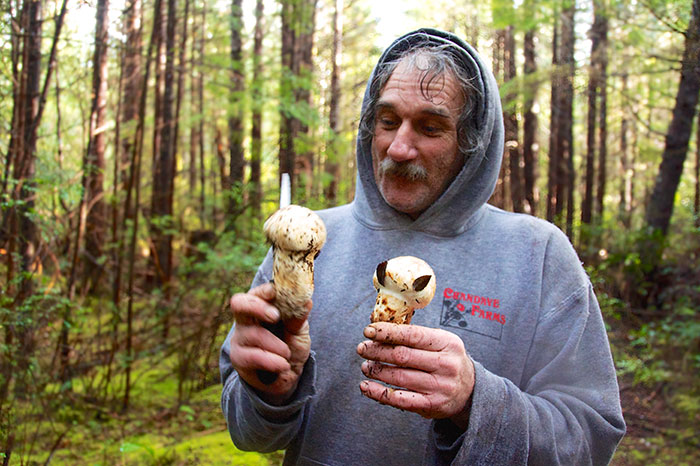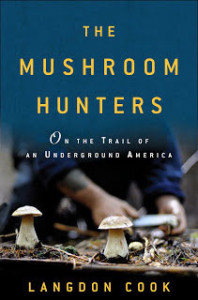I explained my plan to an acquaintance in Oregon who was in the process of starting a truffle farm. “These guys are very territorial,” she wrote back, “and most pack guns. They can be dangerous. I’d think long and hard about hanging out with them.” Despite such dire warnings, I was already too far gone. To learn the ways of the [commercial] mushroom hunters, I would need to stand on their turf, to pick alongside them, and maybe even sell some of my labor at a local buy stand. —Langdon Cook, author of The Mushroom Hunters.
Wild mushrooms can only be foraged from the wild where they natively grow; they can’t be domestically farmed. They are incredible delicate, sometimes exotic in appearance; their flavors may be meaty, sweet, nutty, or deliciously sublime, depending upon the variety. In fresh form, they are often perishable within a couple days of harvest. As Langdon Cook describes in the video, there’s a financial ecosystem that follows the path of the wild mushrooms: the commercial pickers who forage for these often hidden treasures, the buyers (and brokers) that set up nearby camps to purchase their fresh picked products for the retail market—the farmers markets, and high-end restaurants that serve harvested “wild foods” to their clientele.
A longtime bird-watcher and nature enthusiast, Langdon only learned to cook when he began foraging recreationally for wild mushrooms. He had been picking morels in the woods in Washington State— morels are notoriously difficult to find, and there he stumbled upon a couple of commercial pickers. While Cook had managed to harvest about 5 pounds of these precious morels, the 2 commercial pickers each, looked to be carrying about 80 pounds on their packs. It was then that Cook realized, there was another level to mushroom hunting, and he was determined to find out more.
Eventually, that rare encounter led to to a 2008 interview with a commercial picker, Jeremy Faber, for a magazine article he was writing about the wild mushroom trade. Soon afterward, he began research for The Mushroom Hunters, to his knowledge, the first book of its kind to focus on this rather secretive, and to some degree, illicit industry (Faber would later become one of the book’s central characters).

Cook explained, “I started going around to some of the mushroom hotspots, Sisters, Oregon, the central Cascades of Oregon near Crescent Lake, and Chemult, Oregon where they have the Matsutake camps up there”.
Among other places, he also went to Northern California near the Lost Coast for a variety of winter picking, and Montana for morels. In the writing of the book, Cook says he was probably on the mushroom trail 4 to 5 years. As he summed it up during our interview, “I have hundreds of hours of taped interviews. I have thousands of photographs. I logged thousands of miles.”.
The dedication clearly shows. Deftly written, The Mushroom Hunters is richly strewn with colorful characters, adventurous stories, and fascinating information about the wild mushrooms themselves. Cook’s first-hand account offers an inside look at a rough and tumble wild mushroom trade, as he says in the video, is “the largest all-cash business in the country that’s legitimate”.
This book may well leave you with a yearn for cooked hedgehogs, chanterelles, morels and porcini mushrooms—and a deeper respect of the where and the how these untamed culinary treasures make it to your table.
It did for me.
Most of the videos featured on Cooking Up a Story were produced, filmed, and edited by Rebecca Gerendasy. Fred Gerendasy contributed as a writer to many of the posts and occasionally as the interviewer. Visit Rebecca Gerendasy Clay – Art and Fred Gerendasy Photography to see their current work.

